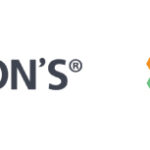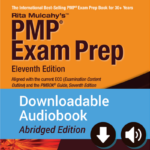
- The Project Life Cycle
- Development Life Cycle vs Development Approach
- Choice of Development Approach
- Importance of Project Management Process Groups
- Impact for the Project Manager
The Project Life Cycle
A project life cycle is a progression through a series of developmental stages. It’s how you organize doing the work of the project – the logical breakdown of what you need to do to create project deliverables. The project life cycle is based on the industry in which the project is being conducted, the organization’s preferences, and the development approach (for example plan driven versus Agile).
A project life cycle can use a plan-driven or change driven development approach, or a hybrid of the two. Examples of common project life cycles include:
- Product Development: Define, Design, Develop, Deploy, Deliver
- Software Development: Requirements, Design, Code, Test, Implement
- Construction: Feasibility, Requirements, Design, Build, Test, Turnover
Regardless of the development approach, the details within the project life cycle are expressed in phases that can be planned and executed through progressive elaboration.
Development Life Cycle vs Development Approach
Development Life Cycle and Development Approach mean the same thing. They are based a decision to plan and manage a project using a particular development approach. There are several developmental project management approaches to consider.
Plan-driven. This approach is also referred to as traditional, predictive or waterfall. It requires detailed planning for scope, schedule, cost and other constraints early in the project life cycle before the work begins to produce project deliverables.
Change-driven. These types of projects are iterative and incremental. Also referred to as agile or adaptive, this approach involves early high-level planning of scope – sufficient to allow for preliminary estimates of time, cost, and schedule. Scope is refined a little more with each iteration. With an iterative development life cycle, the product is built incrementally and to successive levels of detail to create the end results.
A predictive life cycle is best used when project requirements are well defined while the adaptive life cycle is preferred where requirements that are less clear. A hybrid life cycle is a combination of the predictive and adaptive approaches.
Choice of Development Approach
The choice of development approach will influence how the project manager tailors their planning, managing, and controlling of the project. It will influence the tools and practices used. It defines how the PM engages with stakeholders, and who is on the PM team or the project team. Additional development approach helps define how risks are planned for, how reporting and status are presented, and aspects of estimating and measuring progress of work.
Importance of Project Management Process Groups
Project Management process groups are the system that the project manager uses to plan and organize work to make sure the benefits and value of the project are realized. The PM uses them to lead the development approach and make sure the work that is represented in the project life cycle is completed efficiently and effectively.
You need to understand project management from two different but corresponding viewpoints. The overall project management process can be managed though the structure of the five process groups: Initiating, Planning, Executing, Monitoring and Controlling. The other structural viewpoint is represented by the three domains: People, Processes and Business Environment.
While the process groups are mainly classified as going in sequence, there is a lot of overlap between process groups at any given time. As a project manager you may find that many project activities are occurring simultaneously. Project Management tends to occur in a certain order, but it is also dynamic, meaning that managing a project is not linear.
Impact for the Project Manager
Both the Development Approach and the Project Life Cycle are required elements of the project management plan. If you are a project manager, understanding the difference is important and relevant in your role as PM.
If you are studying for the PMP exam, understanding the role and application of Development Approaches and the Process Groups are critical to helping you answer questions on these topics correctly. Understand that the Project Life Cycle is unique and relevant for the PM and the project management plan, so you do not misinterpret exam questions. Rita’s Process Chart game is a great tool to use to learn the project management process groups quickly and effectively. If you want a deeper dive in to Agile, consider our Agile Fundamentals eLearning course or our Hybrid Agile book. If you have further questions, feel free to contact us.
- The PMP Exam 2023 - October 10, 2023
- CAPM Exam Format and Content - May 17, 2023
- Are You Ready for the PMP Exam? - May 9, 2023





